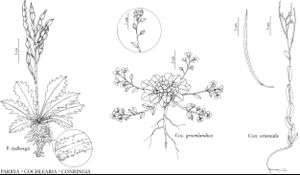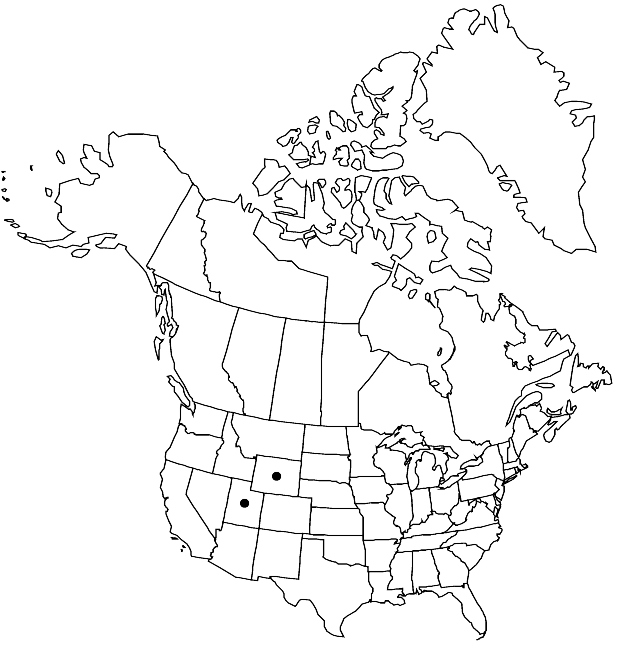Parrya rydbergii
Bot. Mater. Gerb. Bot. Inst. Komarova Akad. Nauk S.S.S.R. 17: 178. 1955.
Plants densely cespitose, caudex branched; densely glandular or, rarely, eglandular. Stems (0.3–) 0.5–1.5 (–2.6) dm. Leaves: petiole (0.5–) 1.5–5 (–7) cm, to 5 mm wide at base; blade obovate to spatulate or broadly oblanceolate to lanceolate, (1–) 2–5 (–8) cm × (7–) 13–26mm, base cuneate or attenuate, margins incised to coarsely dentate, apex acute. Racemes 3–15-flowered. Fruiting pedicels (proximalmost) 4–15 (–20) mm. Flowers: sepals oblong, 5.5–9 × 1.5–2.5 mm; petals lavender to purple, (15–) 16–20 (–23) × 7–9 mm, claw 8–12 mm, apex emarginate; median filaments 4–6 mm; anthers 1.5–2 mm. Fruits narrowly oblong to linear-lanceolate, (2–) 3–5 cm × 5–7 mm; valves densely glandular; ovules 10–16 per ovary; style 0.5–1.5 mm. Seeds 4–5 × 3.5–4.5 mm; wing 1–2 mm wide.
Phenology: Flowering late Jun–Jul.
Habitat: Barren rock slides, alpine tundra, finely divided limestone rubble, calcareous talus, shale slopes, alpine rocky slopes, crevices among boulders
Elevation: 2900-3700 m
Discussion
Parrya rydbergii, which is restricted to Uinta and Emmons mountains in Utah (Daggett, Duchesne, Summit, and Uintah counties) and Beartooth and Big Sheep mountains in Wyoming (Park and Sublette counties), was treated by E. Hultén (1971) as a subspecies of P. nudicaulis and reduced by R. C. Rollins (1993) to synonymy of that species. It is geographically disjunct from P. nudicaulis and can be easily distinguished from that nearest relative.
Selected References
None.
Lower Taxa
"elongated" is not a number."thick" is not a number."dm" is not declared as a valid unit of measurement for this property."dm" is not declared as a valid unit of measurement for this property.

